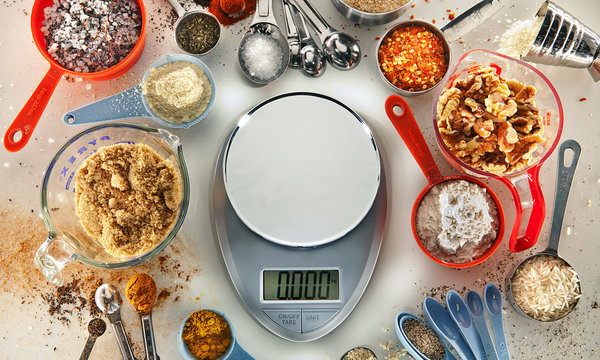
Navigating the world of macronutrients—protein, carbohydrates, and fats—can be confusing, especially when you’re trying to set them up for a great meal plan, not diet (as we discussed in the previous blog). Traditional macro ratios, which divide your daily caloric intake into specific percentages, have been a staple in meal planning. However, the Protein-First Method offers a simpler alternative that’s gaining popularity among nutrition coaches. Let’s explore this method and how it compares to traditional macro percentages.
The Traditional Macro Ratios
The classic method involves setting specific percentages of your daily caloric intake for each macro:
- Protein: 10-35%
- Carbohydrates: 45-65%
- Fats: 20-35%
This ensures balanced nutrition but can be complex to calculate and stick to, leading to frustration and confusion.
The Protein-First Method
The Protein-First Method simplifies the process by focusing on protein intake first, then distributing the remaining calories between carbs and fats based on personal preference. Here’s how you can implement it in three easy steps:
Step 1: Set Protein Grams Using a Body Weight Formula
Protein is crucial for fat loss, muscle retention, and satiety. To set your protein intake, use the formula of 1 gram of protein per pound of body weight or goal body weight if you’re overweight. For instance, if you weigh 195 pounds but want to weigh 145 pounds, aim for 145 grams of protein.
Step 2: Set Fat Grams Using an Accepted Percentage Range
Next, determine your fat intake using 15-30% of your total daily calories. For example, if your target is 1700 calories per day, 25% of that would be 425 calories from fat. Since fat has 9 calories per gram, this translates to 47 grams of fat per day.
Step 3: Calculate Carbs Based on Remaining Calories
After setting protein and fat, the remaining calories will come from carbohydrates. Subtract the calories from protein and fat from your total daily calorie target to find your carbohydrate allowance. For instance, if you have 1005 calories from protein and fat and a total of 1700 calories, you’ll have 695 calories left for carbs. Since carbs have 4 calories per gram, this means 174 grams of carbs per day.
Comparing the Two Approaches
Ease of Use:
- Traditional Ratios: Requires precise calculations and adherence to specific percentages.
- Protein-First: Simplifies the process by focusing on one primary macro, making it easier to follow.
Flexibility:
- Traditional Ratios: Offers structured guidelines but can be less adaptable to individual preferences.
- Protein-First: Provides a customizable framework that can be tailored to personal tastes and lifestyle.
Nutritional Balance:
- Traditional Ratios: Ensures a balanced intake of all macros, supporting overall health.
- Protein-First: Emphasizes protein but requires mindful distribution of remaining calories to avoid imbalances.
Final Thoughts
Both the traditional macro ratios and the Protein-First Method have their merits. The key is to find an approach that aligns with your lifestyle and goals. If you’re looking for a straightforward, customizable way to manage your diet, the Protein-First Method might be the game-changer you need. By ensuring you get your protein and calorie intake right, you’ll be well on your way to achieving your nutrition goals with less confusion and more success.
Example Calculations Female,
195 pounds, aiming for 145 pounds:
- Calories: 1700
- Protein: 145 grams (580 calories)
- Fat: 47 grams (425 calories)
- Carbs: 174 grams (695 calories)
Male, 195-pound lifter aiming to get ripped:
- Calories: 2300
- Protein: 195 grams (780 calories)
- Fat: 51 grams (460 calories)
- Carbs: 265 grams (1060 calories)
By using this method, you can set up a meal plan that fits your specific needs and preferences, simplifying the complex world of macronutrient balance.
Just For YOU!
At Optimized Humans, we are committed to providing you with the personalized support and guidance you need to succeed. As your dedicated partner, I will work with you one on one through our innovative app, leveraging cutting-edge technology and my +15 years of expertise as a certified health coach. Together, we will create a tailored fitness and health plan designed specifically to fit your unique needs and goals. Whether you’re aiming to increase strength, improve stamina, enhance flexibility, or boost mental resilience, I will be there every step of the way to support and motivate you.
Click this link for your free gift!
https://www.trainerize.me/profile/siiib/?planGUID=28a1d9e4193241a59dd3afaa62b54837
Valentine’s Day is synonymous with indulgent treats and decadent meals, but who says you can’t celebrate love while nourishing your body?
This year, embark on a culinary journey that embraces both romance and well-being with these delightful and healthy recipes. Show your love through delicious, nutrient-packed dishes that will leave both your heart and taste buds content.
Grilled Salmon with Lemon-Dill Sauce
Start your romantic dinner with a heart-healthy choice. Grilled salmon is rich in omega-3 fatty acids, while the zesty lemon-dill sauce adds a burst of flavor. Serve it with a side of quinoa and steamed vegetables for a well-balanced, nutrient-dense meal.
Caprese Stuffed Avocados
Elevate the classic Caprese salad by turning it into a visually stunning and nutrient-packed dish. Stuff ripe avocados with cherry tomatoes, fresh mozzarella, and basil. Drizzle with a balsamic glaze for a taste of indulgence without compromising on health.
Zucchini Noodles with Pesto and Cherry Tomatoes
Embrace the trend of vegetable noodles with this light and flavorful dish. Spiralize zucchini into noodles and toss them with a vibrant pesto sauce. Add cherry tomatoes for a burst of sweetness, creating a low-carb, high-flavor option that’s perfect for a romantic evening.
Balsamic Glazed Chicken with Roasted Vegetables
Impress your loved one with a succulent balsamic glazed chicken accompanied by a medley of roasted vegetables. The balsamic glaze adds a touch of sweetness, while the colorful vegetables provide an array of essential nutrients. It’s a dish that marries taste and health effortlessly.
Chocolate-Dipped Strawberries
No Valentine’s Day is complete without a touch of chocolate. Opt for a healthier dessert by dipping fresh strawberries in dark chocolate. Dark chocolate is rich in antioxidants and, when paired with the juiciness of strawberries, creates a guilt-free indulgence.
Mango Avocado Salsa with Grilled Chicken
Bring a tropical twist to your Valentine’s Day dinner with a refreshing mango avocado salsa. Top grilled chicken with this vibrant salsa for a combination that is not only visually appealing but also a delightful blend of sweet and savory flavors.
Chia Seed Pudding Parfait
End your romantic meal on a healthy note with a chia seed pudding parfait. Layer chia seed pudding with fresh berries and a dollop of Greek yogurt. This dessert is not only delicious but also a great source of fiber and protein.
This Valentine’s Day, treat your loved one to a romantic feast that not only ignites the senses but also nurtures your well-being. These healthy recipes showcase that love can be both delicious and nutritious. Celebrate the joy of good food, good health, and the company of your special someone on this day dedicated to love and connection.

